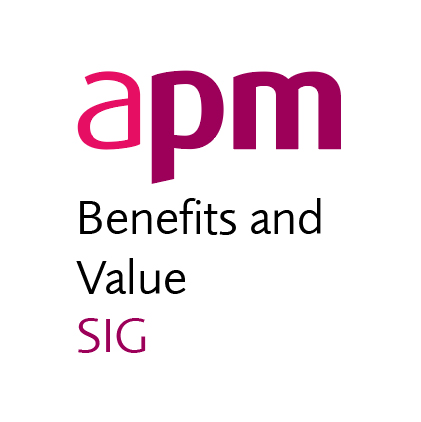The benefits of benefits and value management – why we do stuff webinar
B enefits feature prominently in business cases and gateway reviews, but do they happen in reality? And why does anyone care?
enefits feature prominently in business cases and gateway reviews, but do they happen in reality? And why does anyone care?
195 attendees joined the webinar on Thursday 26 March 2020, and the results include contributions from 108 people who participated live using Mentimeter. Therefore as well as the input from the presenter, those present were able to benefit from the combined expertise of some fantastic attendees.
We kicked off by all getting onto the same page – how do organisations do projects (in programmes and portfolios), and how does benefits management fit into all of this (benefits are the golden thread, the Why? or “Y” of projects/ programmes/ portfolios).
Hugo took us through some tame territory – this is what a benefits map looks like. But as he explained, that’s just kindergarten benefits management – the next stage is to define your benefits and use that information to make decisions – within the programme, what to start/stop/increase/decrease; and planning across a portfolio, how to prioritise and optimise value. So far, we’ve covered the content of APM’s book “a guide to using a benefits management framework”.
And there’s more. By quantifying your benefits, by putting in robust plans and plotting actual realisation against plan, you can make decisions which really improve your project success rate, and reduce the costs that your organisation incurs in delivering benefits.
“A focus on benefits” is a characteristic that a recent report explained, makes the difference between Champion organisations (with >80% success rate) and not-so-champion (<80% project success rate, actually around 26% overall). This makes a huge difference – whereas the less successful organisations may spend up to 14% of turnover (not spend on projects, total turnover!) on failed projects, the champion organisations lose less than 1%. This makes a difference to profits, but also to work won and jobs created.
The slides from the webinar, complete with contributions from the over 100 people who were able to access Mentimeter, are available on this page. In particular, enjoy looking at the written answers to questions such as “why do so many projects fail to deliver benefits?” and “what can professional bodies like APM do to improve benefits realisation?”.
A number of questions were raised, both via Mentimeter and via GoToMeeting. Written answers to these questions will be posted soon.
Webinar resources
Hugo has very kindly allowed his presented material to be made available for viewing.
Some extracts from the webinar recording have been listed on YouTube in our APM resources area and also embedded below for reference.
The audience engaged during the webinar using Mentimeter presentation software and their responses are available to view.
This webinar is suitable for professionals with any level of experience.
Presenter
Hugo Minney PhD ChPP FAPM
Hugo has w orked in project management in many different settings but has probably never once had the job title ‘Project Manager.’
orked in project management in many different settings but has probably never once had the job title ‘Project Manager.’
For the last seven years, Hugo pursued project management as a chief executive in NHS. He recently was a lead contributor to an APM book “a guide to benefits management frameworks” and is currently integrating benefits management into Britain’s largest civil nuclear establishment – Sellafield in Cumbria.
Hugo is a Fellow, and Chartered Project Professional of the Association for Project Management (APM) and Chair of the APM Benefits and Value Specific Interest Group (SIG), and a committee member of British Standards Institute (bsi) Project, Programme and Portfolio standards committee, chairing the benefits management standard sub-committee.
|
APM Body of Knowledge 7th edition reference |
|
| Section | Description |
| 1.1.4 2.1.2 2.1.3 2.3.3 4.1.1 |
Benefits to the organisation Programme shaping Portfolio shaping Adoption and benefits realisation Success and benefits |

0 comments
Log in to post a comment, or create an account if you don't have one already.